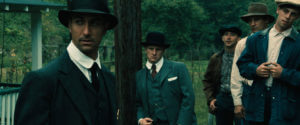

Reader's Choice
Reviews commissioned and selected by Patrons
Review by Brian Eggert October 17, 2020

“You load sixteen tons, what do you get? Another day older and deeper in debt Saint Peter don’t you call me ’cause I can’t go I owe my soul to the company store”
“Sixteen Tons” by Merle Travis
John Sayles has described his 1987 film Matewan as a Western set in Appalachia. But rather than follow the traditional Western template and adhere to America as a mythical land of opportunity, this coal miner saga supplies an account of the Matewan Massacre of 1920. If it is a Western, it is a revisionist one, where the country’s idealized virtues are corrupted and its promises of prosperity are hard-won, and the working-class people of Mingo County are exploited and dehumanized. Although its politics supply a sharp reminder of how unions prevent workers’ exploitation by their employers, a theme often deemed unabashedly leftist, Sayles also explores a moving solidarity that grows among miners of different ethnicities. “There’s but two sides to this world,” says union organizer Joe Kenehan, “them that work and them that don’t.” Thus, divergent groups of white locals, Italian immigrants, and black miners from Alabama found their lives under the coal company’s complete control. Whatever their cultural differences, they each inhabit the same class and are rendered equal in Matewan , a film that cannot help but spark comparisons between the 1920s coal wars and the decline of the unions over the last century. And while the film presents clear heroes and villains, it nonetheless presents a complex historical account with an uneasy conclusion.
The so-called Battle of Matewan took place in West Virginia after miners went on strike and joined the United Mine Workers of America (UMWA). Their employers, the Stone Mountain Coal Company, refused to supply better working conditions and instead hired scab workers from the black and Italian communities to fill in the strikers’ spots. The company also hired men from the Baldwin-Felts Detective Agency to enforce their position on the matter. They already controlled many aspects of the miners’ lives, including paying workers with scrip (not U.S. currency) only good at the company’s general store. When new miners arrive in the film, a company boss lists off several items that will be supplied to them, “payment to be deducted” from their pay, of course. The company store also sells clothes and food to the townsfolk, but they charge higher prices because they can. After all, the company owns the town, so competing businesses aren’t allowed to set up shop nearby. At every turn, the company boxed in the workers, giving them no way to escape their servitude. And when the workers went on strike, the Baldwin-Felts agents carried out evictions, harassed locals, and even poisoned milk sent by the Red Cross meant for the strikers’ children—doing far worse than shown in the film, according to Sayles. The strike culminated in a bloody showdown between Stone Mountain representatives and the local law, Sid Hatfield, of the Hatfield-McCoy feud that defined the region in the previous century.
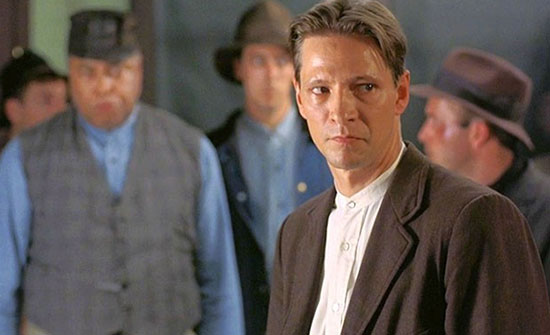
Matewan opens with an underground sequence that shows what the workers are striking about—a dark, damp, dangerous environment that could cave in or, worse, a spark could cause a coal dust fire. Many of the townspeople reference a fire that left many miners dead, including the widowed Elma Radnor (Mary McDonnell), who runs the local boarding house. The town’s workers begin to organize after the arrival of Joe Kenehan, played by Chris Cooper in his first screen appearance. A union representative and admitted “Red,” Joe is concerned with creating a stronger union. He does not care about ethnicity or culture; his “two sides” speech underscores how he sees only workers who must unite, regardless of whether they come from out of state or out of country. Sayles, who frequently confronts matters of race, ethnicity, and culture in his films, builds his scab workers into full-fledged characters. Fausto (Joe Grifasi) and “Few Clothes” Johnson (James Earl Jones) play equal roles in the strike, regardless of the initial backlash from the white locals. What Sayles ultimately captures is the spirit of togetherness, of oneness as workers, as opposed to the more capitalistic self-interest that makes every worker an independent agent willing to step on others’ backs to get ahead. It’s a sentiment that has faded from our culture. But in the 1920s, and even more so in the subsequent decade with the Dust Bowl and the Great Depression, and stories like The Grapes of Wrath that followed, the romantic notion of unionization against exploitative industries emerged.
Joe’s steadfast pacifism is particularly impressive given the film’s despicable villains, Baldwin-Felts agents named Hickey and Griggs, the latter played by Gordon Clapp, the former by Kevin Tighe, an actor often typecast as the heavy. When they arrive in Matewan, they call it a “shithole” after making a crude pass at a local woman. At one point, at Elma’s dinner table, they belittle her 15-year-old son, Danny (Will Oldham), for serving as a local preacher, and then Griggs points a gun in the boy’s face. Danny, having been converted to unionism after witnessing how it brings men together, gives a sermon about Joseph, using the story as an allegory to reveal to his congregation how Hickey and Griggs have been in cahoots with C.E. Lively (Bob Gunton). Lively, seemingly a union man, has manipulated a young woman into making false accusations against Joe, and the strikers plan to kill him. Danny’s sermon was lifted almost verbatim from Sayles’ own novel Union Dues , drawn from his research about the period. Sayles also edits the picture, intercutting the sequence with a scene at the strike camp, where Few Clothes prepares to kill Joe because of Lively’s deceit. It’s a sequence filled with suspense, as Joe’s life hangs in the balance, while Hickey and Griggs, drunk in church, snicker away at Danny, ignoring the message of his story.
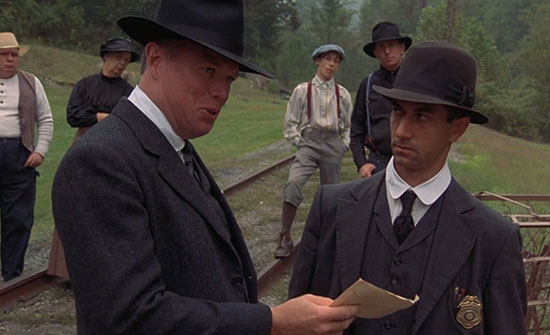
In Thinking in Pictures , Sayles’ book about the making of Matewan , he details how every technical, aesthetic, and thematic choice builds to a whole. It’s a book that outlines, conception to execution, the making of a masterpiece. Development started in the early 1980s, and Sayles, a staunch independent filmmaker, sought to keep his production free from studio influence. He arranged for a traditional bank loan to finance the production for just under $2 million. With his cast and crew just days away from filming in West Virginia, his financiers backed out of their arrangement. Sayles spent the next few years trying to secure the funds, while also working on other projects. He self-financed The Brother from Another Planet , shot a few Bruce Springsteen music videos (including “Born in the USA”), and received a MacArthur genius grant. By 1987, he had secured the film’s budget, then $3.6 million, from independent investors and a small distribution company, Cinecom, and shooting began in West Virginia for maximum visual authenticity. He completed the shoot in just under two months. When it was released, Matewan was mostly well-reviewed, although occasionally criticized for its classical structure. Variety ‘s critic wrote that the film “runs its course like a train coming down the track.” Vincent Canby questioned the screenplay’s “artlessness” in its use of “Shakespearean fundamentals,” such as “purloined letters and conversations overheard by chance.” And as with most Sayles pictures, it did not earn a profit, nor was it seen by a large portion of the moviegoing audience.
Still, on the surface, Matewan takes the form of a crowd-pleaser with a well-drawn oppositional conflict and clear sympathies to a particular side—perhaps a necessity when making a forgotten chapter of history accessible to an unfamiliar audience. Sayles further taps into the audience’s sympathies with his moving use of music. Mason Daring plays twangy transitional guitar riffs, while Hazel Dickens sings in a way that recalls the role of folk songs in Harlan County, USA , Barbara Koppel’s 1976 documentary about a Kentucky coal miners’ strike. Elsewhere, Sayles isolates what he describes as a “communal energy” with the Italian immigrant worker song “Avanti Populo” as an aural theme. Music, evidenced throughout, plays a vital role in the respective cultures in the film. They culminate in a beautiful sequence where an Italian coal worker plays the mandolin; he’s soon joined by a white local on a fiddle, and then a black worker on the harmonica. It’s a perfect metaphor for the harmonization of workers in a union. If community is the fundamental theme of Matewan , as author Jack Ryan suggests in his detailed book on Sayles’ films, then it is never more clearly realized than with music.
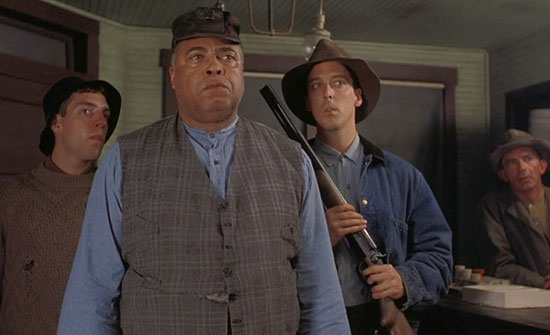
Indeed, Sayles exposes the holes in American idealism in the same manner as revisionist Westerns from Sam Peckinpah ( The Wild Bunch , 1969) and Michael Cimino ( Heaven’s Gate , 1980), or later Clint Eastwood ( Unforgiven , 1992) and Quentin Tarantino ( Django Unchained , 2012). He presents a contrast between the American myth and the disparate reality. For a brief time in Matewan , the workers unionize and combat the country’s legacy of racism, fulfill the dream of every immigrant who wanted to make a living in the New World, and suggest a David-Goliath victory for the worker against the oppressive company. Here’s a film that argues for worker justice, racial equality, and nonviolent solutions in a seemingly classical story, complete with a well-armed lawman who shoots his way out of a tight spot in the final, thrilling minutes. These elements have led to a series of comparisons to the classical Western by critics, most commonly to High Noon (1953). But such correlations ignore Joe’s ironic death, or how the strike’s descent into violence has left no winners.
Matewan is not about a victory—not a lasting one, anyway. Though Hatfield and the others (casualties aside) successfully defended themselves against the Baldwin-Felts men, the West Virginia coal wars would end the next year. Thousands of miners continued to organize, leading to the Battle of Blair Mountain between strikers and a counterforce of various local police, militia, and company agents. President Warren G. Harding declared martial law; he sent the National Guard, U.S. soldiers, and even used the Air Force to bomb the miners and stop the protests. And while Roosevelt’s New Deal would give labor unions more power to organize in the subsequent decades, presidential administrations in the subsequent century, from Reagan to Donald Trump, have continuously stripped unions of their power in favor of big business and profiteering. Matewan reminds audiences that things could be better, whether for workers’ rights or tensions between ethnic communities. Though disruptive to the idyllic stability sought by many in the working class, the power of protest can result in change. While the unions dwindle and division between ethnicities continues to worsen, Sayles, as ever, offers a stirring, humanist lesson from the past.
(Editor’s Note: This review was suggested and commissioned on Patreon. Thank you for your support, Mark! )
Bibliography:
Carson, Diane, and Heidi Kenaga (editors). Sayles Talk: New Perspectives on Independent Filmmaker John Sayles . Wayne State University Press, 2005.
Hamrah, A. S. “ Matewan: All We Got in Common .” 29 October 2019. Criterion . www.criterion.com/current/posts/6664-matewan-all-we-got-in-common. Accessed 10 October 2020.
Ryan, Jack. John Sayles, Filmmaker: A Critical Study of the Independent Writer-Director . McFarland, 1998.
Sayles, John. Thinking In Pictures: The Making Of The Movie Matewan. Da Capo Press; Revised Edition, 2003.

Related Titles

The Definitives

- In Theaters
Recent Reviews
- Good One 4 Stars ☆ ☆ ☆ ☆
- Strange Darling 3 Stars ☆ ☆ ☆
- Blink Twice 3 Stars ☆ ☆ ☆
- Alien: Romulus 2.5 Stars ☆ ☆ ☆
- Skincare 3 Stars ☆ ☆ ☆
- Sing Sing 3.5 Stars ☆ ☆ ☆ ☆
- Borderlands 1.5 Stars ☆ ☆
- Dìdi 3 Stars ☆ ☆ ☆
- Cuckoo 3 Stars ☆ ☆ ☆
- The Instigators 2 Stars ☆ ☆
- Trap 2.5 Stars ☆ ☆ ☆
- Patreon Exclusive: House of Pleasures 4 Stars ☆ ☆ ☆ ☆
- Patreon Exclusive: La chimera 4 Stars ☆ ☆ ☆ ☆
- Deadpool & Wolverine 3 Stars ☆ ☆ ☆
- Starve Acre 3 Stars ☆ ☆ ☆
Recent Articles
- The Definitives: The Spirit of the Beehive
- Interview: Jeff Vande Zande, Author of The Dance of Rotten Sticks
- Reader's Choice: Even Dwarfs Started Small
- The Definitives: Nocturama
- Guest Appearance: KARE 11 - Hidden Gems of Summer
- The Labyrinth of Memory in Chris Marker’s La Jetée
- Reader's Choice: Perfect Days
- The Definitives: Kagemusha
- The Scrappy Independents of Mumblegore
- Reader's Choice: Society of the Snow
- Share full article
Advertisement
Supported by
Film: John Sayles's 'Matewan'
By Vincent Canby
- Aug. 28, 1987
TAKING as his source material an especially bitter and bloody confrontation between West Virginia coal miners and the company that owned their souls in 1920, John Sayles has made a film with the sweetness and simplicity of an Appalachian ballad.
''Matewan,'' opening today at Cinema 1, is so direct in its sympathies and so unsophisticated in its methods that it seems to be an intrusion on our awareness of everything that's happened to complicate the American labor movement between then and now.
Yet it's this awareness that gives ''Matewan'' its poignancy and separates it from the old, optimistic, in-unity-there-is-strength movies made in the 1930's. Mr. Sayles understands that there is strength in unity, but his film is seen in the context of more than 60 years of labor history, which had included the growth of giant unions vulnerable to corruption, and, more recently, a political climate in which union-busting causes little outrage.
Mr. Sayles, possibly our foremost independent film maker (''The Return of the Secaucus Seven,'' ''The Brother From Another Planet''), is also independently skeptical. He recognizes that good intentions sometimes leave as many victims dead on the street as greed.
''Matewan'' borrows its title from the name of the small mining community in the West Virginia hills where, in the opening sequence, the Stone Mountain Coal Company is attempting to smuggle in a couple of boxcars full of black laborers to break the threatened strike. Like the Italian immigrants who have already been brought to Matewan, the black miners haven't known of the strike possibility until their arrival.
Also on the train is Joe Kenehan, a lone union organizer. As written by Mr. Sayles, and as played with a sense of patient mission by Chris Cooper, Joe Kenehan is a figure of mythic proportions, part Joe Hill, part Jesus Christ. His task: to give direction to the miners' negotiations and to prevent the kind of sabotage and violence that would give the company an excuse to bring in their goons. That he must fail is the film's distantly heard, mournful theme.
We are having trouble retrieving the article content.
Please enable JavaScript in your browser settings.
Thank you for your patience while we verify access. If you are in Reader mode please exit and log into your Times account, or subscribe for all of The Times.
Thank you for your patience while we verify access.
Already a subscriber? Log in .
Want all of The Times? Subscribe .

NewsMatch Challenge: Support investigative reporting from LPM, and your gift is doubled.
'Matewan' Revisited: Film Unearthed Region’s Buried Labor History

Thirty years ago the premiere of a small-budget, independent film had an out-sized effect on how many people in Appalachian coal country thought about their region and their past.
“Matewan,” directed by John Sayles, depicted a bloody chapter in the fight to organize coal miners in the 1920s, exploring themes of class struggle and pacifism in a style that evoked classic Western movies. The film earned an Academy Award nomination for its cinematography and helped establish some of its actors, including David Straithairn , Mary McDonnell and Chris Cooper .
But in the Ohio Valley region, “Matewan” is best remembered for telling a story that had long been forgotten, or perhaps, willfully ignored. Now, a museum dedicated to what’s known as the Mine War is hosting a 30th anniversary screening of the film to recognize its role in bringing a long-buried history to light.

Matewan; Alexandra Kanik
Left: “Matewan” film still from 1987; Right: A 2017 image of Thurmond, West Virginia, where the film was shot.
'It wasn’t taught'
Ask Terry Steele to introduce himself and he starts at the beginning.
“I was born in a little old town called Matewan, in the southern part of West Virginia, in 19-and- 52.”
He’s the fourth generation of Steeles to work coal in West Virginia. “Yeah, I’ve come from a long line of people mining coal,” he said.
Steele estimates he spent 50,000 hours underground during 26 years as a miner.
“A union miner,” he corrected.
Union. It’s an important distinction for Steele. He takes great pride in his region’s role in forging the United Mine Workers of America. But he said that it’s often been a forgotten role.
“I still don’t think a lot of people know the history in the area,” he said. “It wasn’t taught in schools, and if it wasn’t taught in homes you’d have no idea of the roots of our region or how our union got started.”
It’s a common lament in the area. So much happened in the hills that produced coal and so few seem to know it.
“This one area of West Virginia history has been ignored and, in some cases, suppressed,” West Virginia Southern Community College history professor Chuck Keeney said. Keeney has documented the ways that early miners’ strikes and marches were censored from press accounts and then downplayed in history classes for decades afterward.

Left: “Matewan” film still from 1987; Right: Thurmond, West Virginia in 2017.
“They wanted to keep labor history out of the textbooks,” Keeney said. “My own family didn’t talk much about it.”
And that’s pretty striking considering Keeney’s lineage.
“I’m also the great-grandson of Frank Keeney , who was a central figure in the West Virginia mine wars,” Keeney said.
Even with that personal link to organized labor’s origin, it just wasn’t something the family focused on.
“No, it wasn’t,” Keeney chuckled. “First of all, he was charged with murder, charged with treason.”
The charges came in connection with a 1921 miners’ uprising known as the Battle of Blair Mountain , in which thousands of marching miners confronted well-armed coal company guards. Keeney’s great-grandfather was acquitted on the murder charges and treason charges were dropped. But the charges and the taint of a “socialist” ancestor made the family tree an awkward topic for conversation.
And so it went for years. Coalfield labor history was often shunned, censored, forgotten.
Then, in the mid ‘80s, a film director named John Sayles came to West Virginia to shoot a movie he’d been thinking about since a hitch-hiking trip two decades earlier.
“I think America’s labor history hasn’t been forgotten so much as buried, on purpose,” Sayles said.

Matewan film promo; Rodrigo Fernández, wikipedia
Left: Jonathan Sayles, director, on the “Matewan” set in 1987; Right: Sayles at the Miami Book Fair International in 2011.
A lot of Listening
“I used to do a lot of hitch-hiking in the ‘60s,” Sayles told me. “I was going through Kentucky and West Virginia during the contentious UMW election.”
That was when Joseph “Jock” Yablonski challenged UMW President Tony Boyle, and was later murdered along with his wife and daughter. Sayles said many people he talked with compared the violence to the bloody incidents from the 1920s.
“I got a lot of rides from coal miners who were kind of shaking their heads about it and they said, ‘boy it’s really bad, and I think this is going to be as bad as the Matewan massacre ,’” Sayles recalled.
“I had never heard of this Matewan massacre, so it kind of led me to do some research.”
He learned that in May, 1920, the rising tension and violence between striking miners and coal operators in southern West Virginia came to a head in a shootout that left 10 people dead in Matewan.
Sayles was hooked.
“It’s an incident that stood for a lot of the labor movement at the time,” he said. “And the story had a movie-like quality of being like a Western. It ends in a shootout at high noon on Main Street.”
More than a decade would pass before Sayles could raise the money for the film he wanted to make. But once he started, he wrote, planned, and cast with a near-obsessive attention to authentic detail.
“One thing you have to do is a lot of listening,” Sayles said of his approach to movie-making. He read diaries, histories, newspapers, and talked to people in the area about the stories they’d heard from parents and grandparents.
“Some of it is rumor, some fact. They are great stories,” he said. “There’s a rhythm and feel of those stories you try to absorb into the narrative.”
Sayles chose to shoot the film in a tiny West Virginia town, nearly a ghost town, called Thurmond, where train tracks line the only street deep in the gorge carved by the mighty New River.
“Just being in those hills every day was great. Nothing like ‘em,” he said. “But practically, shooting down in the holler, you get less light. If you are shooting days you have to budget time carefully.”
Sayles also cast many local and regional actors including a teenager from Louisville named Will Oldham .

Matewan film promo; Jeff Young
Left: Will Oldham played the preacher in the 1987 film “Matewan.” Right: Today, Oldham lives in Louisville, Kentucky with his wife.
“I was 16,” Oldham said while sitting on his porch in Louisville. Oldham played Danny Radnor, a boy preacher and union helper who (spoiler alert!) turns out to be the film’s narrator.
“I was in awe of pretty much everyone.”
Oldham is now a musician who performs under the stage name Bonnie “Prince” BIlly. As a teenager on the set in 1986 he remembered hearing local singer Hazel Dickens deliver a graveside song for a scene.
“That there were such powerful purveyors of song walking the earth,” Oldham said, “that was pretty massive, and eye opening.”
Union With a Capital 'U'
Sayles had a knock-out cast. Cooper, a rising star with rugged charm, played the pacifist union organizer Joe Kenehan. Straithairn played the far-from-pacifist sheriff Sid Hatfield. And James Earl Jones was cast as a miner named “Few Clothes,” who was among the black workers brought in to break a strike but eventually side with the union.
In a powerful scene, Jones’ character arrives uninvited at a secret union meeting. He endures racial slurs in silence but angers when called a “scab.”
“One thing I wanted to do with ‘Matewan’ was to talk about union with a capital ‘U,’” Sayles said. “Not just trade unions, but the idea that to do something bigger people have to come together and get past ethnic prejudices, racial prejudices, class prejudices, and work together.”
When I asked Sayles what theme from the film he thinks is most relevant 30 years later, he returned to the racial divisions among workers.
“That’s still going on. All our stuff along the border, with the wall, is complicated by racism and economics,” he said. “And it is to the advantage of unscrupulous employers to keep people separate, to always have someone on the bottom who can’t get a job.”

Left: “Matewan” film still; Right: Rail marker at the entrance of Thurmond, West Virginia.
Revival of Pride
Retired miner Terry Steele has another, earthier way of phrasing that same idea.
“People in power convince poor people to kick some other poor people in the ass,” he said.
Thirty years on, the film about his hometown brings up a bittersweet mix of emotions for Steele.
Mining jobs in general have sharply declined in the past three decades and union miners are even more scarce. Steele’s UMW local is now inactive — all aging retirees.
“I’m a spring chicken in that crowd,” he joked.
But people are now more aware of their history, he said, thanks in large part to Sayles’ film.
“It matters to me because it tells a story of the struggles that the miners went through, and what we had to do to have a union,” he said.
Steele volunteers at the West Virginia Mine Wars Museum in Matewan, which his wife, Wilma, and other volunteers helped to start a few years ago. Wilma Steele also credits the movie with helping people rediscover their past.
“Absolutely it did,” she said. “And I saw a revival of pride in their history, which had been missing.”
History professor Chuck Keeney, another founding board member of the museum, said many elements of that history seem all too familiar today.
“We could spend the next hour talking about similarities to the 1920s. A lot of frightening similarities: Anti-immigration, racial tensions,” he said. “People are forgetting commonalities and thinking more about their differences.”
Keeney said the period when the film came out also saw the release of some scholarly work and important historical fiction on the mine wars, notably Denise Giardina ’s novel “Storming Heaven.” He views the “Matewan” premiere as a turning point.
“It was the first time people could go to the theater, in some type of communal fashion, and talk about the history,” he said. “And so it kind of allowed people to reconnect. It got people talking about it.”
One such conversation was with his father. Keeney remembered going to see the movie “Matewan” with his dad, who slowly opened up about the Keeney family history.
Today, he hopes the Mine Wars Museum will help keep the story of union miners from being buried again.

Can we count on your support?
Louisville Public Media depends on donations from members – generous people like you – for the majority of our funding. You can help make the next story possible with a donation of $10 or $20. We'll put your gift to work providing news and music for our diverse community.
The Criterion Collection
- My Collection
John Sayles

Written and directed by John Sayles, this wrenching historical drama recounts the true story of a West Virginia coal town where the local miners’ struggle to form a union rose to the pitch of all-out war in 1920. When Matewan’s miners go on strike, organizer Joe Kenehan (Chris Cooper, in his film debut) arrives to help them, uniting workers white and black, Appalachia-born and immigrant, while urging patience in the face of the coal company’s violent provocations. With a crackerjack ensemble cast—including James Earl Jones, David Strathairn, Mary McDonnell, and Will Oldham—and Oscar-nominated cinematography by Haskell Wexler, Matewan taps into a rich vein of Americana with painstaking attention to local texture, issuing an impassioned cry for justice that still resounds today.
- Share on Facebook
- Share on Twitter
- United States
- 133 minutes
Director-Approved Special Edition Features
- New 4K digital restoration, supervised by director John Sayles, with uncompressed monaural soundtrack on the Blu-ray
- Audio commentary from 2013 featuring Sayles and cinematographer Haskell Wexler
- Two new documentaries on the making of the film featuring Sayles, producer Maggie Renzi, production designer Nora Chavooshian, and actors Chris Cooper, James Earl Jones, Mary McDonnell, Will Oldham, and David Strathairn
- New interview with composer Mason Daring
- Short documentary on the impact that Matewan ’s production had on West Virginia
- New program on the film’s production design featuring Chavooshian
- English subtitles for the deaf and hard of hearing
- PLUS: An essay by critic A. S. Hamrah
New cover by Eric Skillman
Purchase Options
Related films.

A scene from Matewan

Them That Work
Drawing on his own background as a union-man, director John Sayles joined forces with producing partner Maggie Renzi to research a 1920 coal miners’ strike and bring it to the screen.

Matewan: All We Got in Common
In one of his most resonant works of political filmmaking, John Sayles painstakingly brings to life an important and volatile chapter in American labor history.
By A. S. Hamrah
You have no items in your shopping cart
You are using an outdated browser. Please upgrade your browser to improve your experience.

“Matewan” Revisited: Film Unearthed Region’s Buried Labor History
By: Jeff Young | Ohio Valley ReSource Posted on: Friday, October 6, 2017
- 'Matewan' Revisited: Film Unearthed Region’s Buried Labor History
Thirty years ago the premiere of a small-budget, independent film had an out-sized effect on how many people in Appalachian coal country thought about their region and their past.
“Matewan,” directed by John Sayles, depicted a bloody chapter in the fight to organize coal miners in the 1920s, exploring themes of class struggle and pacifism in a style that evoked classic Western movies. The film earned an Academy Award nomination for its cinematography and helped establish some of its actors, including David Straithairn , Mary McDonnell and Chris Cooper .
But in the Ohio Valley region, “Matewan” is best remembered for telling a story that had long been forgotten, or, perhaps, willfully ignored. Now, a museum dedicated to what’s known as the Mine War is hosting a 30th anniversary screening of the film to recognize its role in bringing a long-buried history to light.

“It wasn’t taught”
Ask Terry Steele to introduce himself and he starts at the beginning.
“I was born in a little old town called Matewan, in the southern part of West Virginia, in 19-and- 52.”
He’s the fourth generation of Steeles to work coal in West Virginia. “Yeah, I’ve come from a long line of people mining coal.”
Steele estimates he spent 50,000 hours underground during 26 years as a miner.
“A union miner,” he corrected.
Union. It’s an important distinction for Steele. He takes great pride in his region’s role in forging the United Mine Workers of America. But he said that it’s often been a forgotten role.
“I still don’t think a lot of people know the history in the area,” he said. “It wasn’t taught in schools, and if it wasn’t taught in homes you’d have no idea of the roots of our region or how our union got started.”
It’s a common lament in the area. So much happened in the hills that produced coal and so few seem to know it.
“This one area of West Virginia history has been ignored and, in some cases, suppressed,” West Virginia Southern Community College history professor Chuck Keeney said. Keeney has documented the ways that early miners’ strikes and marches were censored from press accounts and then downplayed in history classes for decades afterward.

“They wanted to keep labor history out of the textbooks,” Keeney said. “My own family didn’t talk much about it.”
And that’s pretty striking considering Keeney’s lineage.
“I’m also the great-grandson of Frank Keeney , who was a central figure in the West Virginia mine wars,” Keeney said.
Even with that personal link to organized labor’s origin, it just wasn’t something the family focused on.
“No, it wasn’t,” Keeney chuckled. “First of all, he was charged with murder, charged with treason.”
The charges came in connection with a 1921 miners’ uprising known as the Battle of Blair Mountain , in which thousands of marching miners confronted well-armed coal company guards. Keeney’s great-grandfather was acquitted on the murder charges and treason charges were dropped. But the charges and the taint of a “socialist” ancestor made the family tree an awkward topic for conversation.
And so it went for years. Coalfield labor history was often shunned, censored, forgotten.
Then, in the mid ‘80s, a film director named John Sayles came to West Virginia to shoot a movie he’d been thinking about since a hitch-hiking trip two decades earlier.
“I think America’s labor history hasn’t been forgotten so much as buried, on purpose,” Sayles said.

A lot of Listening
“I used to do a lot of hitch-hiking in the ‘60s,” Sayles told me. “I was going through Kentucky and West Virginia during the contentious UMW election.”
That was when Joseph “Jock” Yablonski challenged UMW President Tony Boyle, and was later murdered along with his wife and daughter. Sayles said many people he talked with compared the violence to the bloody incidents from the 1920s.
“I got a lot of rides from coal miners who were kind of shaking their heads about it and they said, ‘boy it’s really bad, and I think this is going to be as bad as the Matewan massacre ,’” Sayles recalled.
“I had never heard of this Matewan massacre, so it kind of led me to do some research.”
He learned that in May, 1920, the rising tension and violence between striking miners and coal operators in southern West Virginia came to a head in a shootout that left 10 people dead in Matewan.
Sayles was hooked.
“It’s an incident that stood for a lot of the labor movement at the time,” he said. “And the story had a movie-like quality of being like a Western. It ends in a shootout at high noon on Main Street.”
More than a decade would pass before Sayles could raise the money for the film he wanted to make. But once he started, he wrote, planned, and cast with a near-obsessive attention to authentic detail.
“One thing you have to do is a lot of listening,” Sayles said of his approach to movie-making. He read diaries, histories, newspapers, and talked to people in the area about the stories they’d heard from parents and grandparents.
“Some of it is rumor, some fact. They are great stories,” he said. “There’s a rhythm and feel of those stories you try to absorb into the narrative.”
Sayles chose to shoot the film in a tiny West Virginia town, nearly a ghost town, called Thurmond, where train tracks line the only street deep in the gorge carved by the mighty New River.
“Just being in those hills every day was great. Nothing like ‘em,” he said. “But practically, shooting down in the holler, you get less light. If you are shooting days you have to budget time carefully.”
Sayles also cast many local and regional actors including a teenager from Louisville named Will Oldham .

“I was 16,” Oldham said while sitting on his porch in Louisville. Oldham played Danny Radnor, a boy preacher and union helper who (spoiler alert!) turns out to be the film’s narrator.
“I was in awe of pretty much everyone.”
Oldham is now a musician who performs under the stage name Bonnie “Prince” BIlly. As a teenager on the set in 1986 he remembered hearing local singer Hazel Dickens deliver a graveside song for a scene.
“That there were such powerful purveyors of song walking the earth,” Oldham said. “That was pretty massive, and eye opening.”
Union With a Capital “U”
Sayles had a knock-out cast. Cooper, a rising star with rugged charm, played the pacifist union organizer Joe Kenehan. Straithairn played the far-from-pacifist sheriff Sid Hatfield. And James Earl Jones was cast as a miner named “Few Clothes,” who was among the black workers brought in to break a strike but eventually side with the union.
In a powerful scene, Jones’ character arrives uninvited at a secret union meeting. He endures racial slurs in silence but angers when called a “scab.”
“One thing I wanted to do with ‘Matewan’ was to talk about union with a capital ‘U,’” Sayles said. “Not just trade unions, but the idea that to do something bigger people have to come together and get past ethnic prejudices, racial prejudices, class prejudices, and work together.”
When I asked Sayles what theme from the film he thinks is most relevant thirty years later, he returns to the racial divisions among workers.
“That’s still going on. All our stuff along the border, with the wall, is complicated by racism and economics,” he said. “And it is to the advantage of unscrupulous employers to keep people separate, to always have someone on the bottom who can’t get a job.”

Revival of Pride
Retired miner Terry Steele has another, earthier way of phrasing that same idea.
“People in power convince poor people to kick some other poor people in the ass,” he said.
Thirty years on, the film about his hometown brings up a bittersweet mix of emotions for Steele.
Mining jobs in general have sharply declined in the past three decades and union miners are even more scarce. Steele’s UMW local is now inactive — all aging retirees.
“I’m a spring chicken in that crowd,” he joked.
But people are now more aware of their history, he said, thanks in large part to Sayles’ film.
“It matters to me because it tells a story of the struggles that the miners went through, and what we had to do to have a union,” he said.
Steele volunteers at the West Virginia Mine Wars Museum in Matewan, which his wife, Wilma, and other volunteers helped to start a few years ago. Wilma Steele also credits the movie with helping people rediscover their past.
“Absolutely it did,” she said. “And I saw a revival of pride in their history, which had been missing.”
History professor Chuck Keeney, another founding board member of the museum, said many elements of that history seem all too familiar today.
“We could spend the next hour talking about similarities to the 1920s. A lot of frightening similarities: Anti-immigration, racial tensions,” he said. “People are forgetting commonalities and thinking more about their differences.”
Keeney said the period when the film came out also saw the release of some scholarly work and important historical fiction on the mine wars, notably Denise Giardina ’s novel “Storming Heaven.” He views the “Matewan” premiere as a turning point.
“It was the first time people could go to the theater, in some type of communal fashion, and talk about the history,” he said. “And so it kind of allowed people to reconnect. It got people talking about it.”
One such conversation was with his father. Keeney remembered going to see the movie “Matewan” with his dad, who slowly opened up about the Keeney family history.
Today, he hopes the Mine Wars Museum will help keep the story of union miners from being buried again.
- All Teaching Materials
- New Lessons
- Popular Lessons
- This Day In People’s History
- If We Knew Our History Series
- New from Rethinking Schools
- Workshops and Conferences
- Teach Reconstruction
- Teach Climate Justice
- Teaching for Black Lives
- Teach Truth
- Teaching Rosa Parks
- Abolish Columbus Day
- Project Highlights
Film. Written and directed by John Sayles. 1987. 132 minutes. A feature film depicting a strike in a mining town in Appalachia and the struggle for solidarity across racial lines.
- Click to email a link to a friend (Opens in new window)
- Click to share on Pinterest (Opens in new window)
- Click to share on Twitter (Opens in new window)
- Click to share on Facebook (Opens in new window)
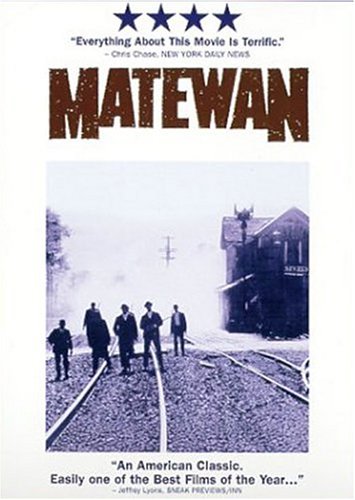
Eric Foner describes the film as follows in Past Imperfect: History According to the Movies , edited by Mark Carnes:
Matewan tells the story of a bitter 1920 strike in the coal mines of southern West Virginia. The struggle culminates in the Matewan Massacre, a violent (and historically accurate) confrontation in which the town’s mayor, seven armed guards hired by the coal operators, and two miners lost their lives. However, this film does more than chronicle a particularly dramatic episode in American labor history.
In the hands of director John Sayles, Matewan offers a meditation on broad philosophical questions rarely confronted in American films: the possibility of interracial cooperation, the merits of violence and nonviolence in combating injustice, and the threat posed by concentrated economic power to American notions of political democracy and social justice.
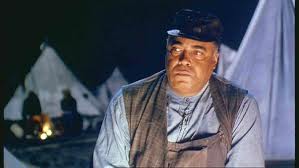
Although Matewan is peopled with actual historical figures — notably Sid Hatfield, the town’s pro-union chief of police and the central protagonist in the massacre — Sayles uses two fictional characters to propel the plot. One is Danny Radnor — a boy preacher, miner, and union supporter — in whose voice as narrator, looking back from fifty years later, the story of Matewan is told. The second is the film’s main character, Joe Kenehan, a World War I veteran, former member of the Industrial Workers of the World, organizer for the United Mine Workers of America, and committed pacifist. . .
. . . Through music, regional accents, and numerous local characters, Sayles successfully creates a sense of the Matewan community. Visually, too, the film is remarkably effective, thanks to Haskell Wexler’s careful and deliberate cinematography. Dramatic as it is, Matewan is not ‘entertaining’ in the conventional sense. With its accented dialogue often difficult to follow and its slow-moving pace, it demands concentration on the part of the viewer, but partly because of this, it succeeds admirably in creating a sense of time and place.
Distributed by Cinecom Pictures.
Related Resource
- Thinking in Pictures: The Making of the Movie Matewan by John Sayles. The short essay “Why Matewan?” in this book is useful to share in class when showing this film.
Related Resources

The Power in Our Hands: A Curriculum on the History of Work and Workers in the United States
Teaching Guide. By Bill Bigelow and Norm Diamond. 1988. 184 pages. Role plays and writing activities project high school students into real-life situations to explore the history and contemporary reality of employment (and unemployment) in the U.S.
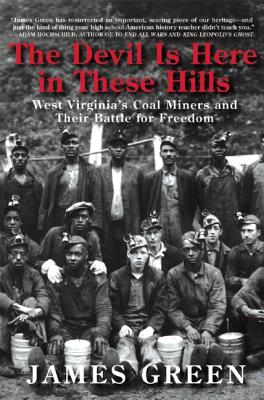
The Devil Is Here in These Hills
Book — Non-fiction. By James Green. 2015. 448 pages. History of one of the most protracted and deadly labor struggles in U.S. history that was waged in West Virginia.
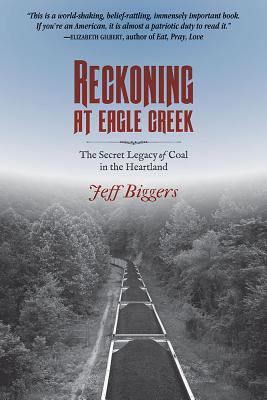
Reckoning at Eagle Creek: The Secret Legacy of Coal in the Heartland
Book — Non-fiction. By Jeff Biggers. 2014 (2nd edition). 328 pages. The untold history of coal mining in the U.S. through the lens of race, labor, and the environment.
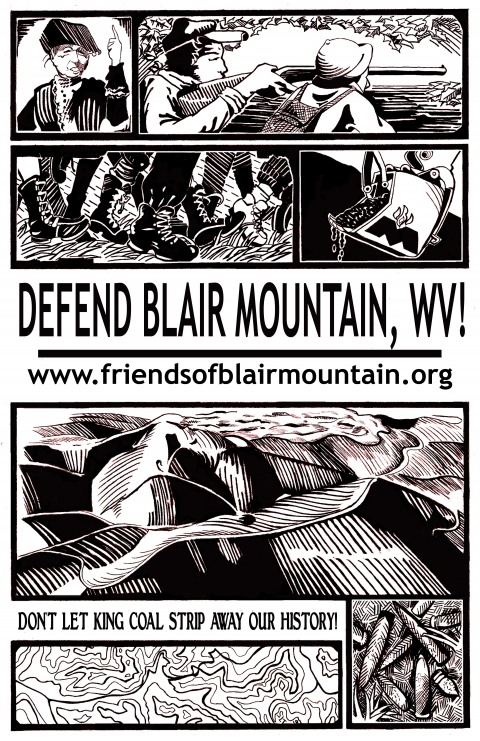
Battle of Blair Mountain
Song. By David Rovics. 2003. Ballad about the West Virginia Coal Mine War of 1920-1921.
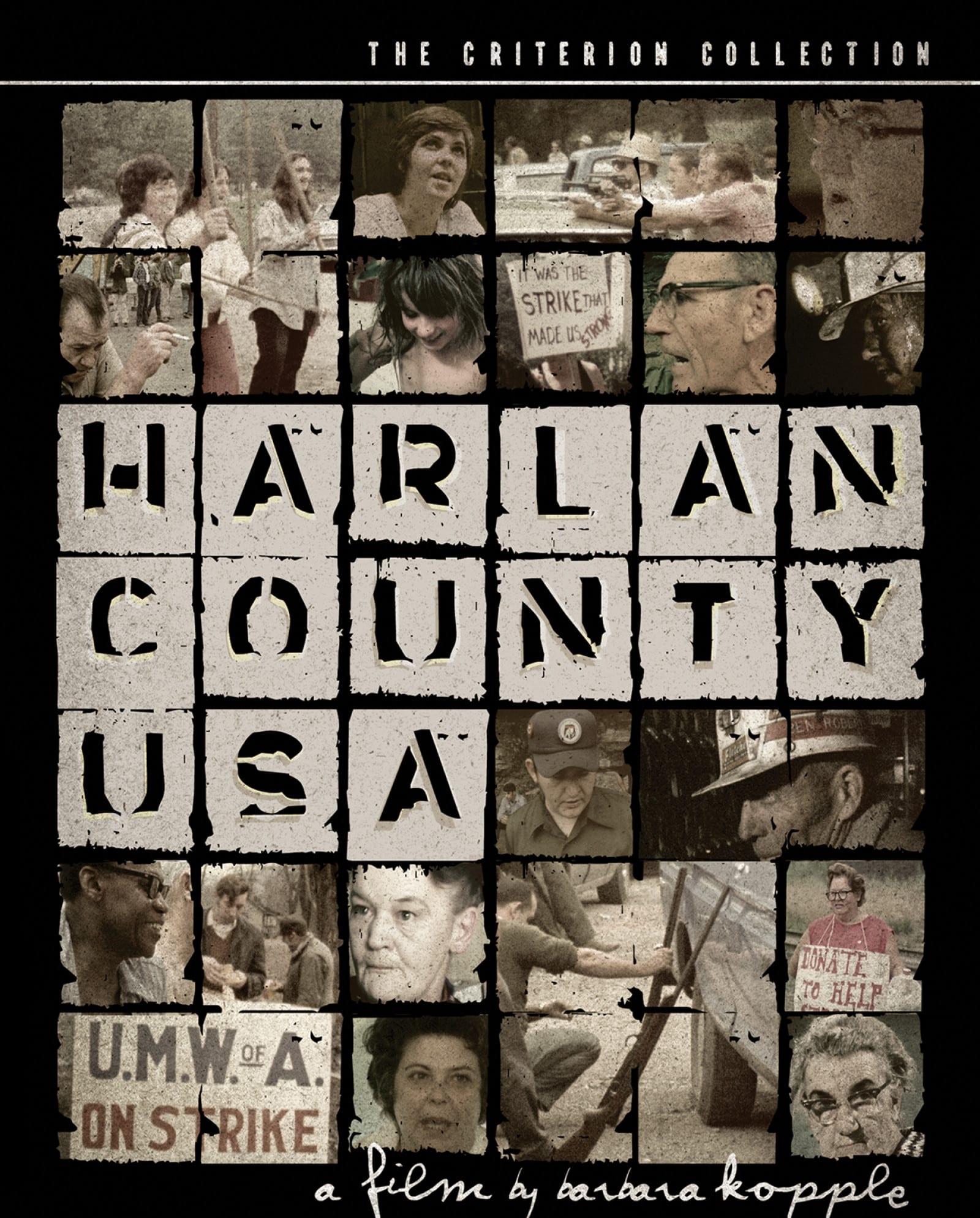
Harlan County USA
Film. Directed and produced by Barbara Kopple. 1976. 103 minutes. This documentary tells the story of a Kentucky coal miners’ strike and the thirteen-month struggle between a community fighting to survive and a corporation dedicated to the bottom line.
2 comments on “ Matewan ”
The movie “Matewan” is, as you say, a powerful movie… on many levels. Unfortunately, the movie is a total fictional account of the incident. Virtually nothing in the film actually happened in Matewan up to and including the events of May 19, 1920. The power of the movie is that it is a catalyst for misinformation and outright lies as to the persons and events portrayed – hence it has spread these falsehoods throughout the media and internet and people have latched onto them as if they were facts. John Sayles, who wrote and directed the movie, stated that it is a work of fiction, but that has not stopped the falsehood that it is referenced as fact. The truth of the matter is that the Matewan chief of police, Sid Hatfield, along with miners and union officials, orchestrated the mass murder of eight people including the mayor of Matewan, C.C. Testerman (Sid was having an affair with the mayor’s wife.) The “reenactment” itself dutifully recreates the misinformation from Sayle’s film. There was no “shoot out” as portrayed in the film. The detectives were for the most part, unarmed and were slaughtered in their tracks. Only three had permits to carry guns and the rest were unarmed, having stowed their weapons in locked satchels before leaving the Urias Hotel to go meet the incoming No. 16 train. The superintendent of the detectives, Albert Felts, was a deputy sheriff of Mingo County and the first person killed in the foray. (Sheriff Blankenship had appointed him two years prior {page 487 – Congressional Hearings 1921}). Your statement that “This film is based on solid historical events in West Virginia coal mining country” is not accurate and is misleading by insinuating the film is truthful. This film was released in 1987, three years before the papers of T.L. Felts were discovered and donated to the Eastern Regional Coal Archives in Bluefield. These papers included comprehensive newspaper files of the Massacre and subsequent trial. It also included the interoffice memos of the Baldwin-Felts Detective Agency as it went about investigating the incident – which is a wealth of information that was never meant to be made public. T.L. Felts, a partner in the detective agency, had destroyed all the files of the agency when they disbanded it in 1937, but having lost two brothers in the incident, I can understand how he was hesitant to destroy these papers. The files also included the actual court documents of the Massacre trial held in Williamson. I have read all of these papers, also the Congressional Hearings in 1921 and every facet of information that I could gather as to this incident. My conclusion is that the movie Matewan has not a shred of truth in it. As for the trial and acquittal of Sid and eighteen others, the judge presiding over the case, JD Baily, stated in 1961 to Howard B. Lee, the author of Bloodletting in Appalachia, that the defense testimony in the Matewan trial “was a tissue of the most fantastic falsehoods he ever had to listen to during his years on the bench.”
The truth will set you free…
This artifact is an excellent piece of historical evidence that ought to be taught in public schools. There is a plethora of knowledge denied to our students.
Comments are closed.
More Teaching Resources


Matewan (1987)
Directed by john sayles.
- AllMovie Rating 4
- User Ratings ( 0 )
- Your Rating
- Overview ↓
- User Reviews ↓
- Cast & Crew ↓
- Awards ↓
- Related ↓
Description by Wikipedia
Matewan (/ˈmeɪtwɒn/) is a 1987 American drama film written and directed by John Sayles, and starring Chris Cooper (in his film debut), James Earl Jones, Mary McDonnell and Will Oldham, with David Strathairn, Kevin Tighe and Gordon Clapp in supporting roles. The film dramatizes the events of the Battle of Matewan, a coal miners' strike in 1920 in Matewan, a small town in the hills of West Virginia.
Official Site
Part of collection, related movies.

Alternate Titles

Ohio State nav bar
The Ohio State University
- BuckeyeLink
- Find People
- Search Ohio State
Matewan (1987)

Watch The Film Here:
Https://www.youtube.com/watchv=pvlwoflzaby.
John Sayle’s 1987 film Matewan pays credence to working class struggle and union organizing, in the context of a 1920’s work cessation with a coal company that attempts to rein control over a mining community. Taken place in the mining capital of West Virginia in 1921, union organizer Joe Kenehan (Chris Cooper), miner “Few Clothes” Johnson (James Earl Ray), mayor Cabell Testerman and police chief Sid Hatfield (David Stratharin) fight against the powers of the Stone Mining Coal Company and Baldwin-Felts detective agency so that workers’ rights and their standard of living wouldn’t be suppressed by subpar working conditions and exploitation. The film dramatizes the events of the Battle of Matewan, a shootout and workers strike between local coal miners and Baldwin-Felts detectives in Matewan, a small mining town in southern West Virginia.

Two men sent to Matewan on behalf of the Stone Mountain Coal Company (left) meet Police Chief Sid Hatfield and Mayor Cabell Testerman (right) moments prior to the shootout on the train tracks on Matewan that would later become known as “The Battle of Matewan” or “the Matewan Massacre.”
Matewan is a historical drama that uses realism to illustrate the dynamic struggles within a small coal mining town known as Matewan, West Virginia, in which the miners “stand up” to the Stone Mountain Coal Company in the form of a union. Taking place in 1920, the coal miners of Matewan found themselves facing multi-faceted hardships from decreasing wages and poor working conditions, to the struggles of assimilation between the white men of Matewan, the Italian immigrants, and the African American men, to the threats coming from the Baldwin-Felts Detective Agency, to the challenges of living in a coal camp with dwindling union funds, ultimately to the violence and death of their own at the hands of the agents as well as gunman of the Coal company. The Appalachian music that is consistently played throughout the film expresses the misc en scene and aural narrative strategies that gave viewers a deeper sense of place and time in the film. The drama element of this film is strong, as viewers experience the emotions of injustice, hate, hopefulness, justice, and peace, among many others.

The film certainly depicts the pure hardship of life in a coal mine. Similarly, the film utilizes scenes such as the one depicted above to portray the tensions between the white men of Matewan, the Italian immigrants, and the African American men, all of whom would come to find solidarity in their equal struggles against the Stone Mountain Coal Company.
Narrative Structure:
The film follows a chronological structure of events. There are frequent montages, which are often accompanied by Appalachian folk music. The film has a narrator, who appears to be an older man with an Appalachian accent. Throughout the film the narrator speaks as if the events are in the past. The narrator also offers interiority to the miners’ point of view, implying he is somehow associated with the union side. The final scene reveals that the narrator is an old Danny Radnor, though that is concealed for a majority of the film.
The events of the film generally follow Joe Kenehan (Chris Cooper) His character’s motivations are not given initially; when Joe Kenehan is first introduced, it is not clear that he is a union organizer, though this is revealed later on in the film. This uncertainty places the viewer in the same position as the townsfolk, trying to figure out who Kenehan is.
There are a few other characters through whom the story is focalized at different points. One such character is “Few Clothes” Johnson (James Earl Jones). Johnson becomes the representative for the Black coal miners, and is notably the first Black man to join the union. Kenehan defends Johnson when the white coal miners threaten him. Another key character is Danny Radnor, a 15 year old coal miner and preacher in the town. Danny is the first character to name the union in the opening sequence. It is through Danny’s eyes that we see Hillard Elkins (Jace Alexander) murdered by the Baldwin-Felts men Hickey (Kevin Tighe) and Griggs (Gordon Clapp). This killing ignites the final battle that leaves several of the characters dead. A few scenes are also focalized through Police Chief Sid Hatfield (David Strathairn), such as the scene where Hickley and Griggs try to pay him off to look the other way.
There are also a few different villains. As this is a union film, the overarching villain is the company. However, the hired goons from the Baldwin-Felts Detective Agency, Hickley and Griggs, certainly get the most screen time. They are shown threatening, hasassing and even shooting the miners and townspeople. They are portrayed as sleazy and corrupt, especially when compared to the lawful demeanor of characters like police chief Sid Hatfield. Another notable villain is C.E. Lively ( Bob Gunton). Lively initially appears pro-union, though it is later revealed that he is a spy for the company. Lively also sets up an elaborate plot to get Kenehan assassinated, though Radnor thwarts this plan by spying on Hickley and Griggs. The two men are joined by several other men hired by the company in the final battle.

Historical Accuracy:
The Stone Mountain Coal Company was an actual company that owned several mines across the land of Mingo County, West Virginia. The company hired the Baldwin-Felts Detective Agency on May 19, 1920 to forcibly evict several families who lived in company owned housing. Before this action was taken by the company, tensions had been rising as the coal miners of Matewan sought to unionize as other towns and groups across West Virginia had been doing so. The company responded to this by bringing in black and Italian miners and charging local miners with evictions and firings.
Many characters introduced were involved in the conflict. Sid Hatfield and Cabell Testerman, (the Chief of Police and mayor, respectively) were notably pro-union and supported the miners efforts. They are the ones who approached the detectives before the massacre began. Albert and Lee Felts, namesakes of the Baldwin-Felts Agency, led the eviction process and both would die from the gun fight.
The timeline of events is stretched in the movie. The events actually happened in one day, the Felts brothers and several other detectives arrived in Matewan on the morning train, spent the day evicting families, before eating dinner to catch the five o’clock train out of the town, and the gun fight breaking out when the detectives were on their way to the train station. Miners were having union meetings prior to this, but the presence of the company and hired detectives was brief compared to film which occurred over several days.
While Matewan is a rather accurate portrayal of the Matewan Massacre that occurred in 1920 and represented by several characters that existed in real life, the director creates a few fictional characters to dramatize the events. Joe Kenehan and Danny Radnor are both fictional characters in the film. They are tools used to unify the miners, and especially address the racial divide separating the miners.
Kenehan also exists as an outside source of union knowledge, however historian Eric Foner credits Kenehan from taking away from the sense of history in the community and making it necessary for an outsider to teach “lessons in union organizing and racial tolerance” despite the culture of unionization occurring across the state. Matewan portrays the events well, but it does not provide the context of time period and region well. Miners in the region were acquainted with unions and it was hardly necessary for an outsider to help set one up.

Mayor of Matewan, Cabell Testerman, was shot during “The Battle of Matewan.” Mayor Testerman eventually succumbed to his wounds, dying as a non-coal miner in the coal miners’ struggle.
Matewan and History 2065:
This film is set about 100-60 years after the time period we discussed in class this week, although many of the tones were similar. We saw anti-immigrant sentiment directed at the Italian miners in a similar way to what Irish immigrants faced in the 1800s. We also saw the local miners blaming the immigrants and people of color for losing their jobs rather than their bosses unfair labor practices. As was mentioned in lecture, immigrant labor was often used to undercut union efforts like it was in the film. Another aspect of the lecture material reflected in this movie is the worsening labor conditions. The lack of legislative regulations made cruel and dangerous labor conditions fairly common, as we saw in Matewan. However, an issue brought up in the film that wasn’t really touched on in lecture is that the both the companies and federal government didn’t want to put regulations in place.

Suggested Readings:
Excerpts from a 1923 pamphlet, “Life in a West Virginia Coal Field,” with a preface by the governor of West Virginia
- https://dp.la/primary-source-sets/when-miners-strike-west-virginia-coal-mining-and-labor-history/sources/975
Historian Eric Foner on John Sayles’ Matewan
- http://www.films42.com/feature/november_feature.asp
Map and notes on Stone Mountain Coal Camp
- https://www.theclio.com/entry/101693
Writer/Director John Sayles on the Criterion Rerelease of Matewan
- https://filmmakermagazine.com/109263-i-had-gunfight-westerns-in-mind-with-the-structure-writer-director-john-sayles-on-the-criterion-rerelease-of-matewan/#.YE5aEBNKjBV
An article by Lorraine Boissoneault for Smithsonian Magazine detailing the events of the Battle of Matewan
- https://www.smithsonianmag.com/history/forgotten-matewan-massacre-was-epicenter-20th-century-mine-wars-180963026/
An undergraduate thesis by Lela Dawn Gourley of Old Dominion University on diverse family interactions during the West Virginia Mine Wars in the early 1900s
- https://digitalcommons.odu.edu/cgi/viewcontent.cgi?article=1026&context=history_etds
One thought on “ Matewan (1987) ”
Great job Team Matewan. This post has very strong film analysis, some of the best anyone did in the semester, and great content and historicity. Excellent primary sources, too. I’d like you to amplify the point made by Eric Foner about the local roots and appeal of unionization. You might also want to contextualize the politics of the era. What else what going on with race, immigration, Red Scare, etc. in this era? Italian immigrants brought a union and radical tradition to the U.S. Also, what should we make of the use of armed mercenaries, which the detectives were? The use of violence and these “detective” agencies like the Pinkertons in suppressing union movements is a constant element in the history of the Gilded Age as well.
Leave a Reply Cancel reply
Your email address will not be published. Required fields are marked *
Save my name, email, and website in this browser for the next time I comment.
- Blu-ray edition reviewed by Chris Galloway
- October 23 2019

See more details, packaging, or compare
Written and directed by John Sayles, this wrenching historical drama recounts the true story of a West Virginia coal town where the local miners’ struggle to form a union rose to the pitch of all-out war in 1920. When the town of Matewan’s miners go on strike, organizer Joe Kenehan (Chris Cooper, in his screen debut) arrives to help them, uniting workers white and black, Appalachia-born and immigrant, while urging patience in the face of the coal company’s violent provocations. With a crackerjack ensemble cast—including James Earl Jones, David Strathairn, Mary McDonnell, and Will Oldham—and Oscar-nominated cinematography by Haskell Wexler, Matewan taps into a rich vein of Americana with painstaking attention to local texture, issuing an impassioned cry for justice that still resounds today.
Picture 9/10

Extras 9/10

You Might Like

Lone Star (Blu-ray/4K UHD Blu-ray)

Claudine (Blu-ray)

Howl (Blu-ray)
Movie Reviews : MORAL ISSUES AND MURDER : ‘Matewan’ Is More American Folk Epic Than Social Realism
- Copy Link URL Copied!
The tradition John Sayles is working from in his flawed but often inspiring “Matewan” (selected theaters) is that of the Depression-era celebration of the common man, the passionate Upton Sinclair-like outcry against injustice. But it’s less a piece of social realism than an American folk epic, a Western-in-reverse.
It suggests the kind of movies John Ford used to make, with their noble outlaws and community-as-hero. Retelling the history of the West Virginia mining wars of the 1920s through a modern prism, Sayles performs something near an act of faith.
The movie presents a partly factual re-creation of the Mingo County wars of the early ‘20s--centering on a famous shootout in the Matewan streets. Sayles casts his story in the form of a reminiscence, recalling the dissolution of hostilities between the hill country miners and the blacks and Italian immigrants imported as strikebreakers--as well as the company’s persecutions and the climactic burst of violence which, in Sayles’ eyes, dooms them all.
The movie doesn’t work in purely naturalistic terms, nor does it have the poetic effect of the ‘40s De Sica-Zavattini films. The three films it suggests most consistently are “The Grapes of Wrath,” “Salt of the Earth” and the 1963 Italian film “The Organizer”; the last shot of “Matewan”--consciously or not--almost directly echoes “The Organizer’s” final shot. Sayles uses this tradition and the left-wing Depression literary strains as if they’d never fallen out of fashion. He tells his story straight, hard and simple, like a folk ballad--with a quasi-biblical slant that recalls Steinbeck and fiery, agitating dialogue that suggests Clifford Odets.
Somehow, that simplicity works for him. Telling a story that’s a celebration of moral bravery in the face of hopeless odds, he turns the film into an act of moral bravery too. The actors and technicians in this low-budget $4-million film--some, like Haskell Wexler or James Earl Jones, probably working for fractions of their usual fee--perform with a dedication that transforms the material, gives it resonance and shine.
Everything is reduced to elements. Overly stylized “folk wisdom” pours from some of the characters’ mouths. The villains--including two great sneering gun thugs, Hickey and Griggs, played by Kevin Tighe and Gordon Clapp--have souls blacker than the coal. And the hero, Chris Cooper’s Joe Kenehan, is a near-saintly pacifist: an ex-Wobblie who preaches unionism as a religion, unites the warring racial factions and constantly counsels against violence--especially to the boy, Danny (Will Oldham) who is our symbolic witness.
Since Kenehan’s opposite number, company spy C. E. Lively (Bob Gunton), constantly urges violence, Sayles’ point is clear. The shootout, which would be a glorious climax in most other modern movies, is a tragic mistake. This dilemma is incarnated in a character who would ordinarily be the movie’s hero: Police Chief Sid Hatfield (David Strathairn), the two-gun stalwart who coolly faces down the mine company’s detectives. In Strathairn’s subtly menacing performance, Sid’s kindness and bravery become twisted and hasten the doom. It’s an irony that, while Lively and Hatfield are based on real-life characters--Sid a relative of the legendary feuding Hatfields--noble Joe Kenehan is a complete fiction.
When Sayles’ movies go wrong, it’s often because he’s schematized the conflicts too obviously, let the seams of his argument show. In “Matewan,” some of the midsection climaxes seem too preordained and Kenehan too obviously an exemplar: too removed, at the end, from the action. In a way, Sayles is a natural genre or pattern film maker, who forces himself to be a realist. Here, the four-part narrative structure is so tight that sometimes you feel trapped in it.
But, in “Matewan,” Sayles has pushed himself so hard that he and his company triumph over the mechanical shortcomings. The film, thanks to production designer Nora Chavoosian, has a wonderful period look, plus unerring cinematography by Wexler and acting with a rare ensemble vibrancy. Josh Mostel, Oldham (despite a preppy haircut), Mary McDonnell, Jo Henderson, Nancy Mette and the others listed above are all excellent. But perhaps James Earl Jones, as the gigantic black miner Few Clothes symbolizes the movie’s spirit. Where the others fill their roles almost perfectly, Jones tends to rise above his, infuse it with mythic power and authority.
It may seem that Sayles is trying to revive that simpler, more idealistic view of labor unions that existed in the ‘30s. But, more than that, perhaps, he’s trying to reintroduce poor people, people who suffer unjustly, as proper subjects for American film making, to bring back a sense of social compassion and conscience. “Matewan” (MPAA-rated: PG-13) is not so much a celebration of the labor movement as an attempt to reinvoke the idealism that once infused it--and, by extension, make that idealism valid again. When this movie stumbles, it stumbles honestly and sympathetically, but, when it succeeds, it makes history sing. ‘MATEWAN’
A Cinecom Entertainment Group/Film Gallery presentation of a Red Dog Films production. Producers Peggy Rajski, Maggie Rienzi. Writer/Director John Sayles. Camera Haskell Wexler. Production design Nora Chavoosian. Editor Sonya Polonsky. Music Mason Daring. With Chris Cooper, Will Oldham, James Earl Jones, Mary McDonnell, Kevin Tighe.
Running time: 2 hours, 12 minutes.
MPAA rating: PG-13 (parents are strongly cautioned; some material may be inappropriate for children younger than 13).
More to Read
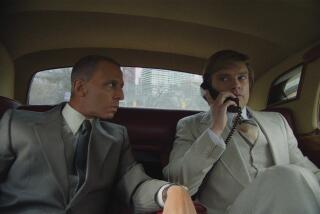
Controversial Trump biopic ‘The Apprentice’ lands U.S. release date before election day

‘Honestly, I was terrified’: Winona Ryder on returning with ‘Beetlejuice Beetlejuice’
Aug. 28, 2024
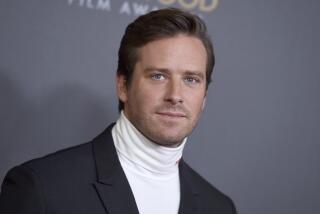
Armie Hammer sells truck he loved ‘intensely’ at CarMax: ‘Can’t afford the gas’ in L.A.
Only good movies
Get the Indie Focus newsletter, Mark Olsen's weekly guide to the world of cinema.
You may occasionally receive promotional content from the Los Angeles Times.
More From the Los Angeles Times
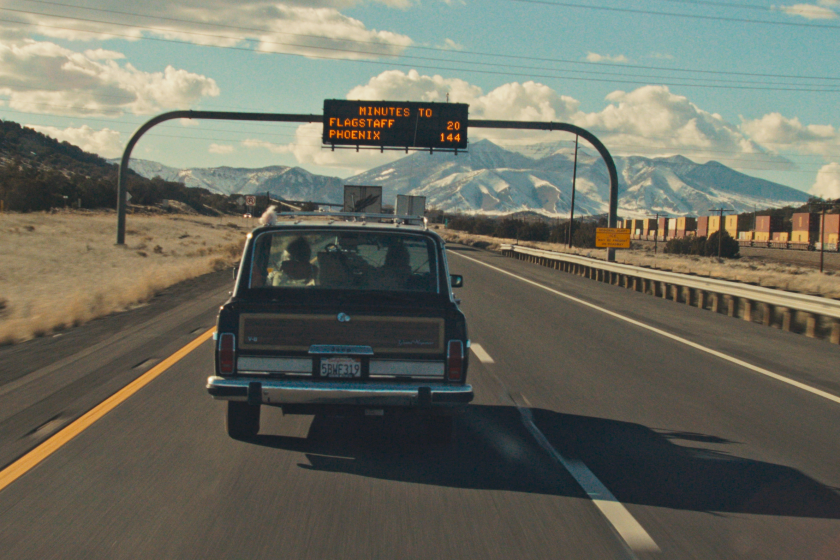
Next year’s Oscars have a surprising original song contender: Kristen Wiig
Aug. 29, 2024
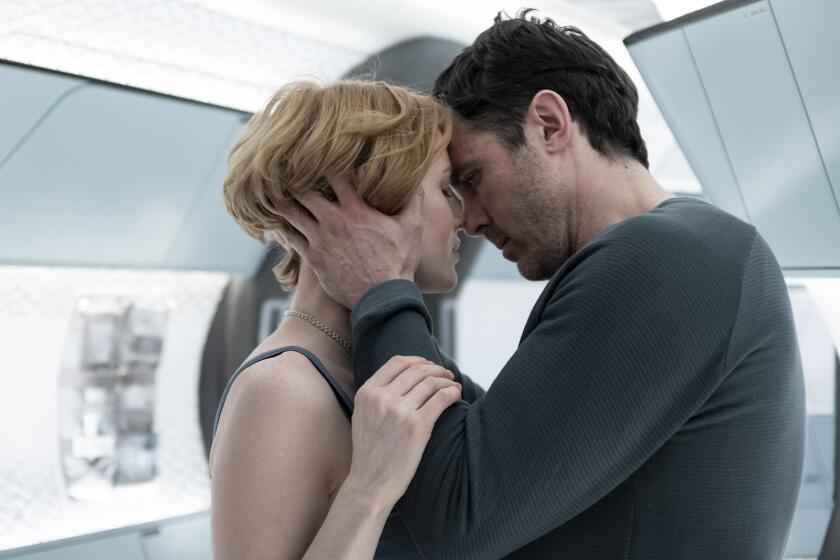
Review: In the sluggish space psychodrama ‘Slingshot,’ no one can hear you snooze
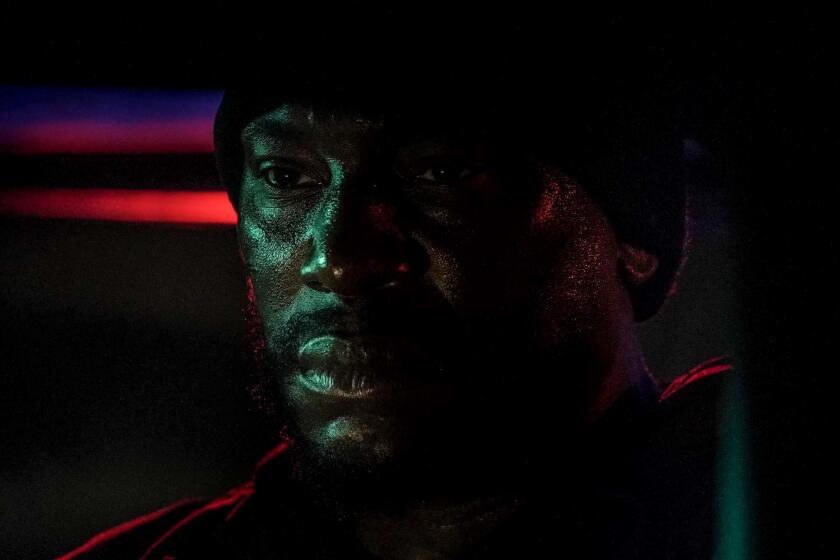
Review: A notorious day in L.A. history becomes the backdrop of a so-so heist thriller in ‘1992’
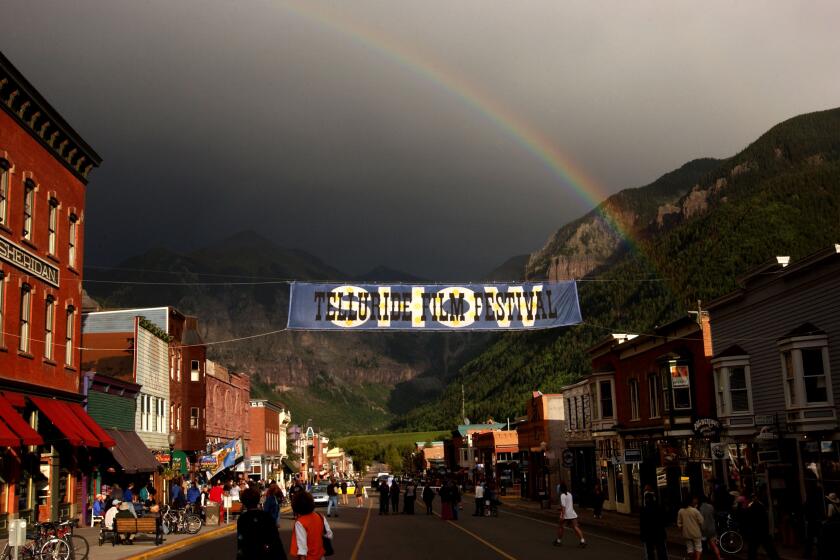
Amid global turmoil, the Telluride Film Festival returns with a politically charged lineup
- Cast & crew
- User reviews

A labor union organizer comes to an embattled mining community brutally and violently dominated and harassed by the mining company. A labor union organizer comes to an embattled mining community brutally and violently dominated and harassed by the mining company. A labor union organizer comes to an embattled mining community brutally and violently dominated and harassed by the mining company.
- John Sayles
- Chris Cooper
- James Earl Jones
- Mary McDonnell
- 68 User reviews
- 34 Critic reviews
- 73 Metascore
- 3 wins & 8 nominations total

Top cast 55

- Joe Kenehan

- Few Clothes Johnson

- Elma Radnor

- Danny Radnor

- Sid Hatfield

- Sephus Purcell

- C.E. Lively

- Hillard Elkins

- Mrs. Elkins

- Cabell Testerman

- (as Michael Preston)
- All cast & crew
- Production, box office & more at IMDbPro
More like this

Did you know
- Trivia Debut feature film of actor Chris Cooper .
- Goofs Look for the sheriff to remove a gun from someone's hand (by holding the gun by the barrel) after it's been fired four or five times.
Joe Kenehan : You think this man is the enemy? Huh? This is a worker! Any union keeps this man out ain't a union, it's a goddam club! They got you fightin' white against colored, native against foreign, hollow against hollow, when you know there ain't but two sides in this world - them that work and them that don't. You work, they don't. That's all you get to know about the enemy.
- Connections Featured in Siskel & Ebert: Chuck Berry: Hail! Hail! Rock 'n' Roll/Like Father Like Son/Baby Boom/Big Shots/Matewan (1987)
User reviews 68
- Feb 25, 1999
- How long is Matewan? Powered by Alexa
- August 28, 1987 (United States)
- United States
- Thurmond, West Virginia, USA
- Red Dog Films
- Cinecom Entertainment Group
- Film Gallery.
- See more company credits at IMDbPro
- $4,000,000 (estimated)
- Aug 30, 1987
Technical specs
- Runtime 2 hours 15 minutes
Related news
Contribute to this page.

- See more gaps
- Learn more about contributing
More to explore
Recently viewed.
Turn autoplay off
Turn autoplay on
Please activate cookies in order to turn autoplay off
- Jump to content [s]
- Jump to site navigation [0]
- Jump to search [4]
- Terms and conditions [8]
- Your activity
- Email subscriptions
- Account details
- Linked services
- Press office
- Guardian Print Centre
- Guardian readers' editor
- Observer readers' editor
- Terms of service
- Privacy policy
- Advertising guide
- Digital archive
- Digital edition
- Guardian Weekly
- Buy Guardian and Observer photos
Today's paper
- Main section
- G2 features
- Comment and debate
- Editorials, letters and corrections
- Other lives
- EducationGuardian
- Life & style
- Environment
Details: 1987, USA, Cert 15, 133 mins
Direction: John Sayles
With: Chris Cooper , David Strathairn , James Earl Jones , Ken Jenkins , Mary McDonnell and Will Oldham
User reviews
Today's best video, the week in tv, 'get your arse out, mate', spanish football player's stunning solo goal, whitewater kayaking: 'i wanted to spend every day on the river'.
- Most viewed
Last 24 hours
- 2. Star Wars Episode VII: what we know as shooting starts
- 3. The Goonies sequel confirmed by director Richard Donner
- 4. After Gremlins and The Goonies, what other 80s films need a remake?
- 5. My guilty pleasure: Trading Places
- More most viewed
- 2. Quiz: Can you match each of these Bond villains with their own evil plot?
- 3. Russian cinemas fined for showing The Wolf of Wall Street
- 4. 2 States and screen kisses: 'Bollywood is cranking it up a notch'
- 5. After Gremlins and The Goonies, what other 80s films need a remake?
- All today's stories
Film search
Latest reviews.
Noah review â 'a preposterous but endearingly unhinged epic'
Russell Crowe wrestles angels and demons in Darren Aronofsky's $125m mashup of the ancient story of Noah, writes Mark Kermode
Honour review â Shan Khan's 'conflicted' first feature
The Double review â Richard Ayoade's dark doppelganger drama
Divergent review â lacks lustre and grit
A Story of Children and Film review â Mark Cousins's 'spine-tingling' visual essay
Sponsored feature
- Across the site
- Film reviews
- Film trailers
- Video interviews
- License/buy our content
- Terms & conditions
- Accessibility
- Inside the Guardian blog
- Work for us
- Join our dating site today
- © 2014 Guardian News and Media Limited or its affiliated companies. All rights reserved.

IMAGES
VIDEO
COMMENTS
Matewan (/ ˈ m eɪ t w ɒ n /) is a 1987 American independent [2] [3] drama film written and directed by John Sayles, and starring Chris Cooper (in his film debut), James Earl Jones, Mary McDonnell and Will Oldham, with David Strathairn, Kevin Tighe and Gordon Clapp in supporting roles. [4] The film dramatizes the events of the Battle of Matewan, a coal miners' strike in 1920 in Matewan, a ...
M atewan opens in the pitch-black darkness of a West Virginia coal mine. A miner lights the carbide lamp on his helmet. The small open flame he wears provides the only flicker of light in this cramped space next to a coal seam. A couple of minutes later, the miner yells out, "Shootin' coal! Shootin' coal!" and soon enough, an explosion ...
Essay about Matewan. Matewan In the film, Matewan, director John Sayles paints a 1920's picture of a small, West Virginia coal-mining town. Over the course of the film, this seemingly American Township reveals itself as the site of feudal hardship for its citizens. The Stone Mountain Coal Company was the sole employer in Matewan.
I owe my soul to the company store". "Sixteen Tons" by Merle Travis. John Sayles has described his 1987 film Matewan as a Western set in Appalachia. But rather than follow the traditional Western template and adhere to America as a mythical land of opportunity, this coal miner saga supplies an account of the Matewan Massacre of 1920.
Overall, Matewan (135 minutes) despite historical inaccuracies and few archetypal characterizations is one of the best American movies to focus on labor politics and ill-treated workers. Matewan (1987) links: IMDb, Rotten Tomatoes, Letterboxd. Arun Kumar is an ardent cinebuff, who likes to analyze movie to its minute detail.
Coal miners, struggling to form a union, are up against company operators and the gun thugs of the notorious Baldwin-Felts detective agency. Black and Italian miners, brought in by the company to break the strike, are caught between the two forces. UMWA organizer and dual-card Wobbly Joe Kenehan determines to bring the local, Black, and Italian ...
Matewan Essay. The citizens of Matewan, a coal -mining town in West Virginia lived amidst a feudalistic class process. One may think of medieval times in connection with feudalism, but the film "Matewan" directed by John Sayles was based on historical events that took place in 1920. The feudal lord was not a European king, and the serfs ...
Chris Cooper, James Earl Jones, Mary McDonnell, Will Oldham, David Strathairn. Rating. PG-13. Running Time. 2h 15m. Genres. Drama, History. Movie data powered by IMDb.com. A version of this ...
But in the Ohio Valley region, "Matewan" is best remembered for telling a story that had long been forgotten, or perhaps, willfully ignored. Now, a museum dedicated to what's known as the Mine War is hosting a 30th anniversary screening of the film to recognize its role in bringing a long-buried history to light. Matewan; Alexandra Kanik.
Written and directed by John Sayles, this wrenching historical drama recounts the true story of a West Virginia coal town where the local miners' struggle to form a union rose to the pitch of all-out war in 1920. When Matewan's miners go on strike, organizer Joe Kenehan (Chris Cooper, in his film debut) arrives to help them, uniting workers white and black, Appalachia-born and immigrant ...
Film Summary And Film Analysis: Matewan. Matewan is a thought provoking and well-crafted movie based on real American labour history. It portrays a troubled time caused by the conflict between unionist miners and the tyrannical coal company owners in the West Virginia coalfields. The struggle of miners fighting against the powerful mining ...
Then, in the mid '80s, a film director named John Sayles came to West Virginia to shoot a movie he'd been thinking about since a hitch-hiking trip two decades earlier. "I think America's ...
Matewan. Film. Written and directed by John Sayles. 1987. 132 minutes. A feature film depicting a strike in a mining town in Appalachia and the struggle for solidarity across racial lines. John Sayles' feature film Matewan is about a strike in a mining town in Appalachia. Mine owners bring in black workers in an attempt to break the strike.
This essay examines the movie Matewan (1987), directed by John Sayles, both as a fictional representation which interprets an actual historical event in interesting ways, and, since its release, as a powerful influence on the actual town of Matewan, West Virginia. It is argued that Sayles draws upon a deep reservoir of national cultural meanings in his depiction of this event, even though it ...
Matewan (/ˈmeɪtwɒn/) is a 1987 American drama film written and directed by John Sayles, and starring Chris Cooper (in his film debut), James Earl Jones, Mary McDonnell and Will Oldham, with David Strathairn, Kevin Tighe and Gordon Clapp in supporting roles. The film dramatizes the events of the Battle of Matewan, a coal miners' strike in ...
670 Words3 Pages. Matewan is the story of mine strikes in the West Virginia town of Matewan during the 1920's. Matewan lies in the heart of Appalachia, and lies atop ground that is rich with coal. The town is primarily company owned, which includes the houses and stores. Unions are the centerpiece in the movie.
Mayor of Matewan, Cabell Testerman, was shot during "The Battle of Matewan." Mayor Testerman eventually succumbed to his wounds, dying as a non-coal miner in the coal miners' struggle. Matewan and History 2065: This film is set about 100-60 years after the time period we discussed in class this week, although many of the tones were similar.
Picture 9/10. John Sayles' Matewan comes to Blu-ray from The Criterion Collection, presented in its original aspect ratio of 1.85:1 on this dual-layer disc. The 1080p/24hz high-definition presentation comes from a brand new 4K restoration, scanned from the 35mm original camera negative. Right off it's clear the colours in the film lean far ...
The movie doesn't work in purely naturalistic terms, nor does it have the poetic effect of the '40s De Sica-Zavattini films. The three films it suggests most consistently are "The Grapes of ...
Matewan: Directed by John Sayles. With Chris Cooper, Mary McDonnell, Will Oldham, David Strathairn. A labor union organizer comes to an embattled mining community brutally and violently dominated and harassed by the mining company.
Matewan Film Analysis. Movie Extra Credit During the winter break I watched the movie Matewan. It was directed by John Sayles and stars Chris Cooper, James Earl Jones, and Mary McDonnell. It takes place in the turbulent town of Matewan, West Virginia during the 1920's as heads butt on whether creating a workers union is the right thing.
Matewan. Details: 1987, USA, Cert 15, 133 mins. ... A Story of Children and Film review â Mark Cousins's 'spine-tingling' visual essay. More film reviews. Across the site ...
Synopsis Of The Movie Matewan 670 Words | 3 Pages. Matewan is the story of mine strikes in the West Virginia town of Matewan during the 1920's. Matewan lies in the heart of Appalachia, and lies atop ground that is rich with coal. The town is primarily company owned, which includes the houses and stores. Unions are the centerpiece in the movie.
Vice President Kamala Harris on Thursday offered her most expansive explanation to date on why she's changed some of her positions on fracking and immigration, telling CNN's Dana Bash her ...